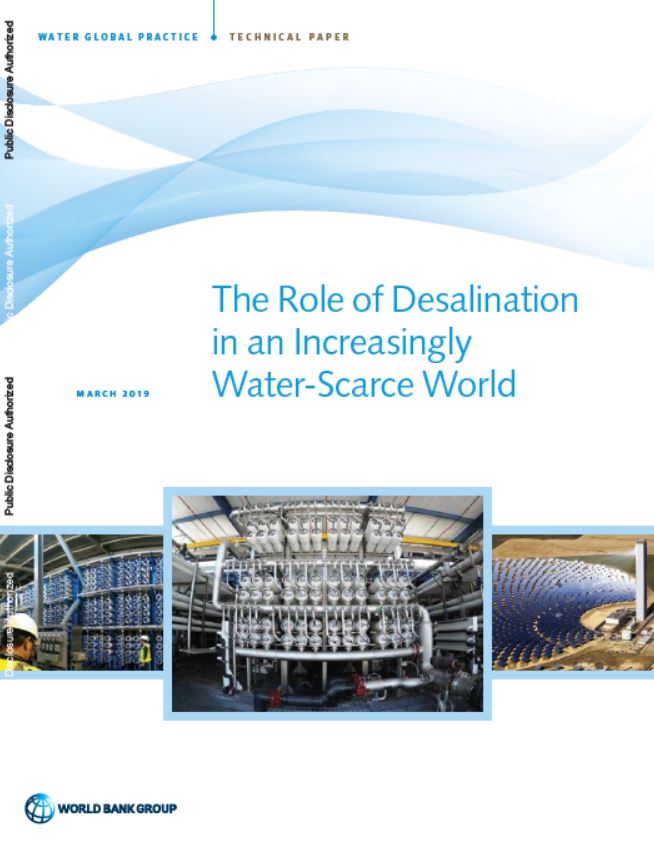The Role of Desalination in an Increasingly Water-Scarce World
 |
rapport coll. Technical paper Mar 2019 ; 135 pages
Ed. World Bank - Washington
Téléchargeable sous format: PdF
Téléchargeable chez l'éditeur
Site internet: https://openknowledge.worldbank.org/handle/10986/31416
Abstract:
The cost of desalination has been plummeting over the years. As a result, desalination has become a viable option for certain strategic uses. Today, over 20,000 desalination plants in more than 150 countries supply about 300 million people with freshwater every day. Initially a niche product for energy rich and water scarce cities, particularly in the Middle East, the continued decrease in cost and environmental viability of desalination has the potential to significantly expand its use - particularly for rapidly growing water scarce coastal cities. Desalination can be seen as one option in a portfolio water supply sources, including traditional surface water and groundwater sources as well as wastewater reuse, to meet growing water demand gap. Although still relatively expensive, desalination offers the potential to enhance system reliability. As renewable sources of energy such as wind and solar expand, and as advances in concentrate management techniques make discharges from desalination plants much cheaper and safer, the prospect of producing freshwater from the sea without increasing greenhouse gases and without significant damages to the local environment become more promising.
Publics-Cibles:
Université , Acteurs de coopération , Décideurs locaux ou nationaux
Mots clefs: |
dessalement (CI) (DT) (OP) (ope) , eau potable (CI) (DT) (OP) (ope) , qualité des eaux (CI) (DT) (OP) (ope) , technologie (CI) (DT) (OP) (ope) |
Editeur/Diffuseur: |
|
World Bank - Washington - Etats Unis |
En cas de lien brisé, nous le mentionner à communication@pseau.org